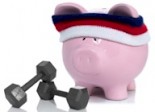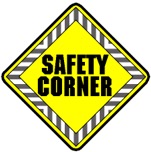- Trucking Pro Advice- How to Excel for the Long Haul
- Spolight on Employee Appreciation at Maverick
- Stories from the Road- Meet Maverick Driver, Kenny Neely
- Fuel up and GO: Healthy and QUICK Recipe & Activity Ideas for the Professional Truck Driver
- The Juggling Act: Stories from the Road- How to successfully balance a professional truck driving career and your family.
- Maverick: At the Forefront of Technology
- Stories from the Road: A Journey
- A Closer Look at How Maverick Gives Back
- Exploring the Advanced Interior of Maverick’s State-of-the-Art Trucks
- 2023 Maverick Driver Appreciation Week
- 2023 National Truck Driver Appreciation Week Food Schedule
- Get to Know Maverick
- Flatbed Trucking Tips and Tricks
- Tips for Staying Hydrated and Safe in the Summer Heat
- Summer Road Trip Essentials
- 2023 Maverick Employee Appreciation Week Food Schedule
- How to Succeed as a Professional Driver
- MAVERICK TRANSPORTATION CELEBRATES FIVE VETERAN TRUCKS TO BEGIN 2023
- 2022 Maverick Employee Appreciation Week Food Schedule
- 2020 Driver of the Year Recap
- 2020 Special Olympic Truck Convoy
- 2019 Driver of the Year Recap
- Maverick Transportation Celebrates 40 Years in Business
- 2019 Driver Appreciation Week Schedule
- 2019 ARKANSAS TRUCKING CHAMPIONSHIP
- 2019 Employee Appreciation Week Schedule
- 2018 Driver of the Year Event Recap
- 2018 Driver Appreciation Week Schedule
- 2017 Driver of the Year Event Recap
- MAVERICK TRANSPORTATION ANNOUNCES LARGE PAY INCREASE
- Maverick Driver Ron Kneeland III Named 2017 Hero of the Highway
- Aces & Freights - 2017 Q3
- Aces & Freights - 2017 Q2
- New Dedicated Driver of the Quarter/Year Program
- DOCUMENTARY FILM “BE PREPARED TO STOP” SHOWS IMPACT OF FAILING U.S. INFRASTRUCTURE ON LIVES OF AMERICANS AND ECONOMY
- Statement on Automated Vehicle Technologies
- Aces & Freights
- 2016 Driver of the Year Event Recap
- Maverick Announces 401k Match for All Maverick Employees
- Be Prepared to Stop
- Advice for the Rookie Maverick Driver – Pt. II
- Advice for the Rookie Maverick Driver – Pt. I
- 2015 Driver of the Year Event Recap
- Delivering Excellence, Driven by People: Meet Lonnie Johnson, Maverick's 2024 Trainer of the Year
Posts
Aces & Freights - 2017 Q2
Tuesday, June 13, 2017
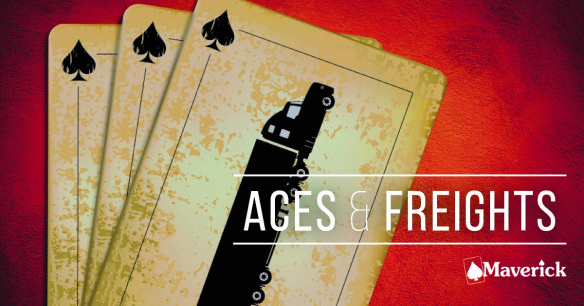
Welcome to our latest edition of Aces & Freights – our newsletter written/edited by Operations Analyst and former driver Ken Moore regarding the trucking lifestyle. Questions or comments? We’d love to hear from you. Please don’t hesitate to contact Ken at kmoore@maverickusa.com. We hope you enjoy the content and we look forward to your comments, suggestions, and any stories you may have to share, too!
Financially Healthy Life Edition
Most of us drive to earn money to support ourselves and our families. We’re out on the road to make sure there’s a roof over our heads and food in the refrigerator when we get there. I’ve honestly only met two people who drove that did not do so to support themselves, but did it for the sole enjoyment and education of driving and experiencing the wondrous sights this country has to offer. The rest of us get to do that as well, but the paycheck that accompanies it is a big deal, too. This edition of A&F is about making money as a driver and how best to do that at Maverick.
The Basics
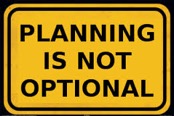
It may seem strange, but I’ve learned more about managing a truck and its business since coming off the road than I did while driving. A good bit of it is because I now have the ability to talk to our best drivers to see what they do. Amazingly, even after more than 5 years with Maverick (evenly split between driving and not driving) and three and a half years driving elsewhere, I’m still learning the tricks of the trade on how to make better money as a driver.
The best drivers do three things well. They plan well. They communicate well. They make friends well.
“Planning is everything.” How many times have you heard that? Well, it’s not. (I did just list two other things above, right?) I will say, however, that it’s not far off. In training, we teach you the basics of planning out your day. Estimate 50 miles/hour driving, include time for your 30 minute break, 10 hour break, load checks, lunch, add a “cushion” in case something like a traffic jam happens and where you will likely park. We don’t get into much more than that during training time because you have to have the basics down in order to do this job. Also, there’s so much in this early stage to remember and so much going on already it’s overwhelming. I know because I’ve been there.
One of the biggest issues in planning is parking. As many of you already know, parking is becoming more and more of a hassle. It’s said that the average driver spends about 45 minutes looking for parking every day. This is more or less true depending on where in the country you are and what time you’re there. You could save yourself a lot of time by starting your day earlier and finishing earlier, though this doesn’t always work with the ever-changing schedule drivers are subjected to. When you plan for parking, figure out several places along the route you’ll be on where you might be able to park. Find a best case scenario for if you have a clear, easy day of driving, a worst case scenario in case you don’t, and a location or two between. You can check how much parking is at each location using the Trucker Path app and even check the parking history of each location to gauge if there’s likely to be parking at that location at the time you’d probably get there. If your choice will not likely have parking available when you get there, you’ll save time by choosing somewhere else. As a general rule of thumb, however, parking in the Northeast and in cities is harder to come by and fills up earlier. In the West and Midwest there are a lot of really large truck stops and it’s easier to get parking later.
I would do a lot of this planning while waiting to get loaded or unloaded. Even if I don’t know where I’m going after I unload, I would pick two possible directions and then mark different spots on the map where I could park depending on when I might finish loading. For example, say it’s noon and I know my clock runs out at 5pm. If the soonest time I estimate being loaded, tarped, and secured is at 2pm, I have about a 150 mile radius to plan out (3 hours left at 50 miles per hour). Once I figured this for 2 possible routes that I might be on, I would then do the same calculations but estimating only two hours left to drive. This way, with a couple possibilities “preplanned”, I can leave a little sooner, park a little sooner, and start up a little sooner the next day. Every little bit helps. I’ve arrived at the end of a work day on a Friday at a receiver before though the load wasn’t due until Monday due to these techniques. I was then able to get another load that delivered Monday, meaning I made several hundred dollars more than I would have had I not figured out how to save 15 minutes here and there.
Communication is huge. Don’t be afraid to ask your FM if he/she knows where you may be going when you’re done unloading. Even though you may not have a preplan sent to you, it’s possible that there’s a “soft” plan (a work assignment that isn’t set in stone and depends on when you finish) set on you. If there is a soft plan on you then it can make your planning a little easier.
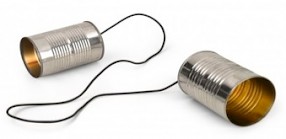
Communication is a big deal! Macro 4’s! Send in your ETA after you plan your trip and then update your FM’s with a new ETA anytime something changes, for good or bad. If you arrive 4 hours earlier than your ETA, you’ve told logistics to expect you there at a different, much later time, so their plan for you revolves around that later time. Updating your arrival time frequently, and I’ve done the math, can improve how much an average driver makes by $3,500 per year. Seriously. That doesn’t even include the uptick you’ll receive in PFP bonuses associated with a higher MPD. As your communication improves, that number will continue to climb.

Make Friends with the customers, especially at the locations you go to frequently. Shippers and receivers will prioritize the people they like. It’s human nature, so unless there’s a strict appointment time, there’s a good chance your friends will get you in and out as fast as they can, which can potentially save you hours almost every time you’re there. Macro 4’s! Send in your ETA after you plan your trip and then update your FM’s with a new ETA anytime something changes, for good or bad. If you arrive 4 hours earlier than your ETA, you’ve told logistics to expect you there at a different, much later time, so their plan for you revolves around that later time. Updating your arrival time frequently, and I’ve done the math, can improve how much an average driver makes by $3,500 per year. Seriously. That doesn’t even include the uptick you’ll receive in PFP bonuses associated with a higher MPD. As your communication improves, that number will continue to climb.
I’ve noticed fairly often that when shippers or receivers don’t speak very much English, that drivers who don’t speak their language have a tough time relating and therefore don’t try to get along with them. Instead, download Duolingo, an easy to use foreign language teaching app, and learn a few phrases. Just the attempt, most times, is enough to get you on their good sides and you’ll be brought in ahead of a driver standing next to you who didn’t try. I’ve done it more times than you’d imagine in both Spanish and French.
Planning, Communicating, and Befriending will all go far into putting more of your available hours behind the wheel. If you’re busy looking for parking, waiting on a load when you may not have needed to, and sitting watching other drivers get loaded and unloaded before you, you’re not earning as much as you could. A little effort in these areas could raise your pay the equivalent of about six paychecks per year!
Rock Your PFP
 Maverick’s Pay for Performance program is built to reward drivers for making the extra effort, for being safe, for taking care of the truck, for being available, and for doing things the Maverick Way. Compared to any of the other performance incentive pay systems out there that I’ve seen, Maverick’s PFP pays out the most and is also the most forgiving for drivers who are doing well in most categories but not all. Many companies, for example, give out a fuel bonus. This is something Maverick did as well before going to PFP. The fuel bonus system motivates a small number of people to improve, usually those who are already doing well in that category. Because PFP is based on a concept of rewarding drivers for being the “whole package”, or well-rounded in other words, it encourages drivers to improve in all areas. Improving in all areas allows Maverick to make the pay for PFP greater than just the pay a fuel bonus could offer. This article will show you how to pop your PFP score up off the charts and improve your pay as a result.
Maverick’s Pay for Performance program is built to reward drivers for making the extra effort, for being safe, for taking care of the truck, for being available, and for doing things the Maverick Way. Compared to any of the other performance incentive pay systems out there that I’ve seen, Maverick’s PFP pays out the most and is also the most forgiving for drivers who are doing well in most categories but not all. Many companies, for example, give out a fuel bonus. This is something Maverick did as well before going to PFP. The fuel bonus system motivates a small number of people to improve, usually those who are already doing well in that category. Because PFP is based on a concept of rewarding drivers for being the “whole package”, or well-rounded in other words, it encourages drivers to improve in all areas. Improving in all areas allows Maverick to make the pay for PFP greater than just the pay a fuel bonus could offer. This article will show you how to pop your PFP score up off the charts and improve your pay as a result.
The first thing you should realize is that Maverick wants you to succeed. Its business model is based on its drivers’ successes, not their failures. It has to be a win-win for both company and driver for Maverick to thrive. That probably sounds like propaganda, but here’s how I know it’s not a bunch of bologna. First, about 80% of our fleet gets PFP to some degree each quarter. Second, Maverick is constantly working on showing drivers how to improve their fuel mileage and trip planning, two of the biggest categories for PFP. And third, there are bonus points built into the PFP calculations. If you take advantage of them, you can send your score off the charts. Check out the Operations Newsletter with the PFP Ranks for the top drivers. 517 drivers received the highest payout. That’s about 40% of the drivers eligible for PFP, which is about half of the total number of drivers getting PFP, getting top pay. Also, if you notice on the Operations Newsletter, the top driver scored 141 points…out of a 100 point system. What does that tell you? That the PFP model and all of the extra points built into it is made for drivers to succeed.
Now that we know this, how do we take advantage of it? We start by understanding how each category is calculated and move on from there.
MPD—Miles per day takes the average number of miles you run in per week and divides that number by 5 work days. There are bonus points worked into this calculation which rewards drivers who drive for more than 5 days per week. Quite a few Glass and TCD drivers are found toward the very top of the PFP scores because they are out, on average, three weeks at a time. That means that they are getting four extra drive days every three weeks which boosts up their MPD.
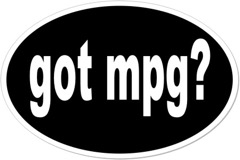 MPG—Miles per gallon is calculated by taking the total Hub miles from the truck during the quarter and dividing by the number of gallons of fuel purchased in the quarter. A driver has control of approximately 35% of the fuel efficiency of a truck, or around 2.5-2.8 MPG. Starting a truck slowly every time it accelerates can save upwards of 1 MPG. Using the cruise control can save another .4-.5 MPG. Not pressing down on the accelerator while on cruise control (which many drivers do when the truck’s OnGuard system kicks in as the truck approaches a slower vehicle, or when the truck slows down going up a hill) will save a driver another .4-.5 MPG. The difference between getting 0 points for MPG and getting 15 points for MPG is around .5 miles per gallon. If a driver makes just a few changes, his/her PFP score can jump 3-4 levels, a difference of about $55-90 more per week added onto the average range of paychecks.
MPG—Miles per gallon is calculated by taking the total Hub miles from the truck during the quarter and dividing by the number of gallons of fuel purchased in the quarter. A driver has control of approximately 35% of the fuel efficiency of a truck, or around 2.5-2.8 MPG. Starting a truck slowly every time it accelerates can save upwards of 1 MPG. Using the cruise control can save another .4-.5 MPG. Not pressing down on the accelerator while on cruise control (which many drivers do when the truck’s OnGuard system kicks in as the truck approaches a slower vehicle, or when the truck slows down going up a hill) will save a driver another .4-.5 MPG. The difference between getting 0 points for MPG and getting 15 points for MPG is around .5 miles per gallon. If a driver makes just a few changes, his/her PFP score can jump 3-4 levels, a difference of about $55-90 more per week added onto the average range of paychecks.
Idle %--Generally, drivers with good fuel mileage have low Idle %. Part of the reason for this is idling the truck uses approximately 1 gallon of fuel per hour and doesn’t add to his/her mileage. Maverick is serious about reducing fuel costs and improving its carbon footprint, and to show this Maverick offers points for overall fuel efficiency and a specific aspect of fuel efficiency. This category is a lot like getting free points.
There’s a little more to it than that, but those three categories are where the bulk of the points lie. It’s possible to get the 95 points required for the top PFP payout with just these three areas. The rest of PFP is about the main aspects of the Maverick culture: doing things the right way and being professional. Understanding the system helps to change the game. Use this information to help make PFP work for you.
Living Good on the Road
…written by Maverick Driver Neil Ottavi
 Have you ever wished you could have stopped for a shower or already had a shower today but wanted to freshen up before going to bed? If so, here’s a tip for you. For a hot bath you will need a 700 watt microwave, a container (preferably with a lid) that will fit into the microwave, lots of washcloths, water, and “Cleanlife” rinse free body wash, which you can get from Amazon delivere
Have you ever wished you could have stopped for a shower or already had a shower today but wanted to freshen up before going to bed? If so, here’s a tip for you. For a hot bath you will need a 700 watt microwave, a container (preferably with a lid) that will fit into the microwave, lots of washcloths, water, and “Cleanlife” rinse free body wash, which you can get from Amazon delivere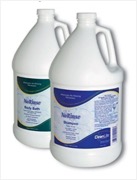 d with free shipping for around $36 to $50. It will last you about 8 to 10 months, maybe more.
d with free shipping for around $36 to $50. It will last you about 8 to 10 months, maybe more.
 Fill the container to about 1/3 full of water, add 1 to 2 ounces of body wash and warm it all up in the microwave for 3 to 5 minutes. Heating the water is optional in the summer months obviously, but at this point you’re ready to take a bath. Simply dip only clean washcloths into your heated water, wring out excess water, wash up, then bag the used washcloths for laundry. This way you will smell powder fresh when done.
Fill the container to about 1/3 full of water, add 1 to 2 ounces of body wash and warm it all up in the microwave for 3 to 5 minutes. Heating the water is optional in the summer months obviously, but at this point you’re ready to take a bath. Simply dip only clean washcloths into your heated water, wring out excess water, wash up, then bag the used washcloths for laundry. This way you will smell powder fresh when done.
P.S. Works to degrease hair, too…I’ve tried shampoo and it works about the same, although it’s best with short hair.
Trainer Spotlight: Trainer of the Quarter, Shawn McLeod
- With Maverick since February, 2015
- Trainer since April 2016
- Drives in GPT Division
- What do you like best about Training?
- I was an instructor in the Marine Corp for a number of years. I like taking students and teaching them new things, and I like being able to put safe drivers out on the road.
- What’s your approach in helping a student who is having trouble?
- I believe that when they come to me it’s more on a one on one level. I need to figure out how that student needs to be taught. I have multiple ways to teach different students different things. If they’re more a hands on or book-and-read type person, it’s a matter of just figuring out how that student needs to be taught. If you can figure that out you can help them with anything. And practice, practice, practice!
- How does you get to know your students?
- By talking to them. I like to know about their families, where they’re raised. You learn something new from everybody. I just ask them about themselves and tell them about myself to put that out there first. If you can find a commonality, that really breaks the ice and builds that trust with your student. Once you build that trust, the student will learn better. I just try to make myself approachable.
- Why do you drive?
- I enjoy it. I’ve been all over the world in the Marine Corp. Originally when I started driving, it was to see the US. It’s also about the freedom. I’m not a clock-puncher, not really a desk person. I just like driving an 18-wheeler. My dad drove an 18-wheeler, too. I just enjoy driving.
- What hobbies do you enjoy?
- I hate to be the cliché country boy, but I shoot and fish with my daughters. I like to be outdoors as much as possible. I play golf and try to spend time with my kids on the weekends when I get home.
- Do you do any of them on the road?
- When I was over the road, I carried a fishing rod on the truck. When it comes to hobbies on the road, you need to be out of the truck as much as possible. I like to walk a lot and I’ve lost about 40 pounds in the last 6 months. I have a Fitbit and if I don’t have the number of steps by the end of the day I gotta do them at night! We do a lot of sitting so you gotta make it up somehow.
Thanks, Shawn! We appreciate your hard work and your dedication to put safer drivers on the road!
Shawn was Maverick’s Q1 Trainer of the Quarter in 2017.
Suggested Apps
O f course I have to promote our own app! The Drive Maverick app has a lot of great features such as easy access to your PFP scores, the Driver Portal and all of its content (including the new Mav411 News Board), scanning your bills of lading, a direct way to enter your driver referrals, the weather, the Employee Portal (which can give you access to previous Aces & Freights newsletters so you can read them anywhere!), and you can get your work assignments and reply to messages your Fleet Mangers send you! Waiting in your truck for news is a thing of the past. FYI, Drive Maverick is compatible with the Apple Watch and Samsung Gear, so you can even get your work assignment sent directly to your wrist! This app will be able to provide more and more as time goes on so join 1,200+ other Mavericks and download it today!
f course I have to promote our own app! The Drive Maverick app has a lot of great features such as easy access to your PFP scores, the Driver Portal and all of its content (including the new Mav411 News Board), scanning your bills of lading, a direct way to enter your driver referrals, the weather, the Employee Portal (which can give you access to previous Aces & Freights newsletters so you can read them anywhere!), and you can get your work assignments and reply to messages your Fleet Mangers send you! Waiting in your truck for news is a thing of the past. FYI, Drive Maverick is compatible with the Apple Watch and Samsung Gear, so you can even get your work assignment sent directly to your wrist! This app will be able to provide more and more as time goes on so join 1,200+ other Mavericks and download it today!
 Weigh My Truck by CAT Scale is the best thing for drivers since…Maverick! No longer will you be forced to find parking for your truck, wait in line, and spend more time telling the attendant the truck’s and trailer’s info just to get your weight ticket. This app will allow you to weigh your truck on any CAT Scale, not just the ones where we fuel, and receive your weight ticket in your email. Potentially, you could save better than 90 minutes of time per week! Instructions on how to register and use Weigh My Truck are in MMS.
Weigh My Truck by CAT Scale is the best thing for drivers since…Maverick! No longer will you be forced to find parking for your truck, wait in line, and spend more time telling the attendant the truck’s and trailer’s info just to get your weight ticket. This app will allow you to weigh your truck on any CAT Scale, not just the ones where we fuel, and receive your weight ticket in your email. Potentially, you could save better than 90 minutes of time per week! Instructions on how to register and use Weigh My Truck are in MMS.
Tony Russo – Temp Control, OTR
1). When facing a hard back try to walk it through in your mind first.
2. Never blindside back if at all possible.
3). Practice backing whenever you have a chance. Backing is a perishable skill. An amateur practices until they get it and a professional practices until they can’t get it wrong.
4). Don’t be afraid to ask for help and don’t let other drivers rush you. Take your time!
5.) GET OUT AND LOOK!
Safety Awards Quarter 1, 2017

Messages from Maintenance
Macro 36 vs Macro 39
If you are on the road (not at or close to a Maverick shop) and need assistance, use Macro 36. Macro 36 will get you in touch with Fleetnet Services. Macro 39 is used when you are at or near a Maverick shop to report maintenance needed. Macro 39 should be sent in, then report to the shop upon arrival at location. You may also contact your Maintenance Coordinator for assistance. Please do not send in both a Macro 36 and Macro 39 at the same time. Macro 36 should not be used if you are at or close to a Maverick shop. Sending in a Macro 36 or a Macro 39 is not required for you to report a Macro 63 (Breakdown Pay Request). Any questions, please get with your Fleet Manager or Maintenance Coordinator.
NLR Shop Now Open 24/7!
If you have a story about life on the road that you’d like to tell or if you have some tips to help other drivers be more efficient or to enjoy life OTR a little more, please contact kmoore@maverickusa.com.

